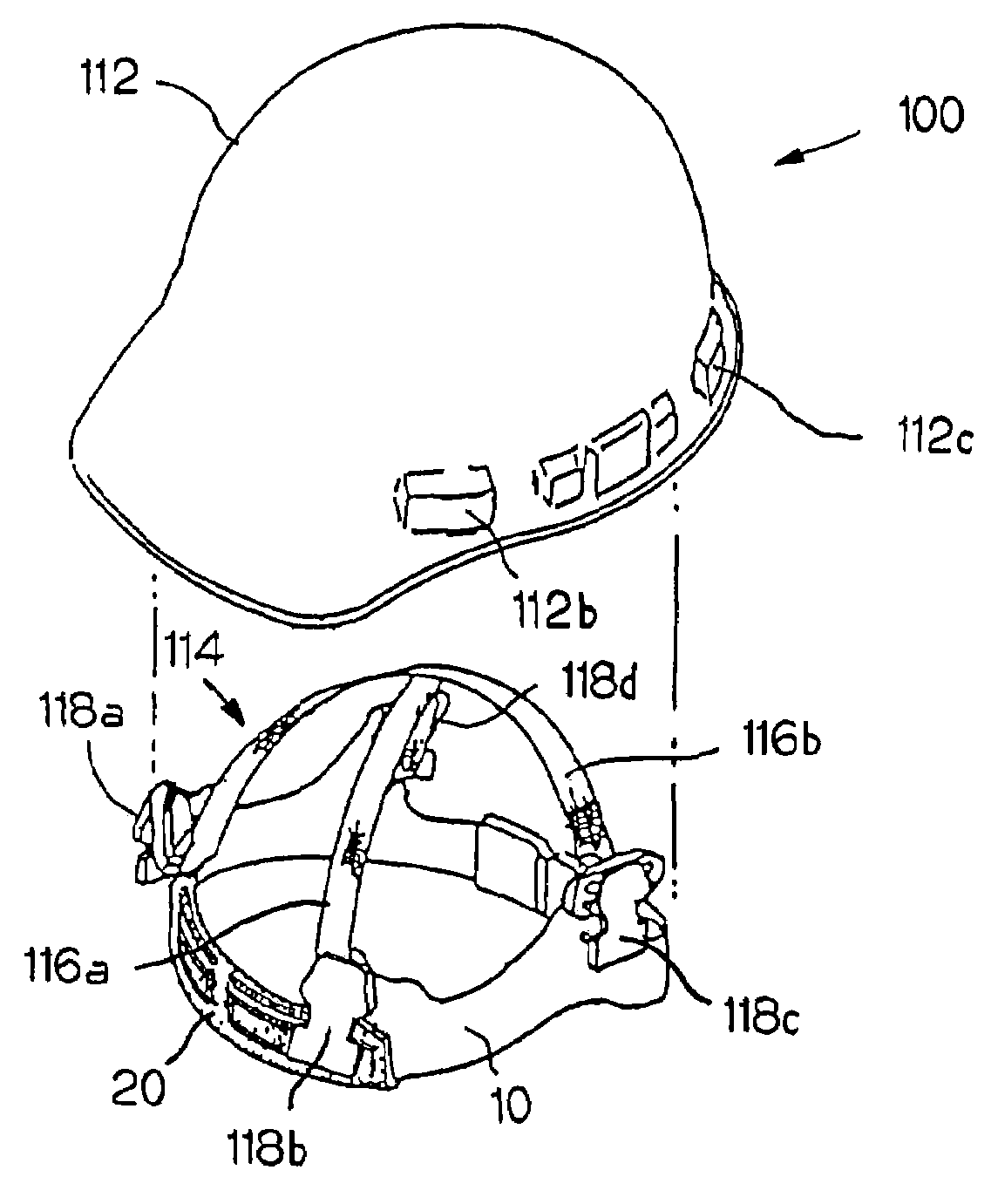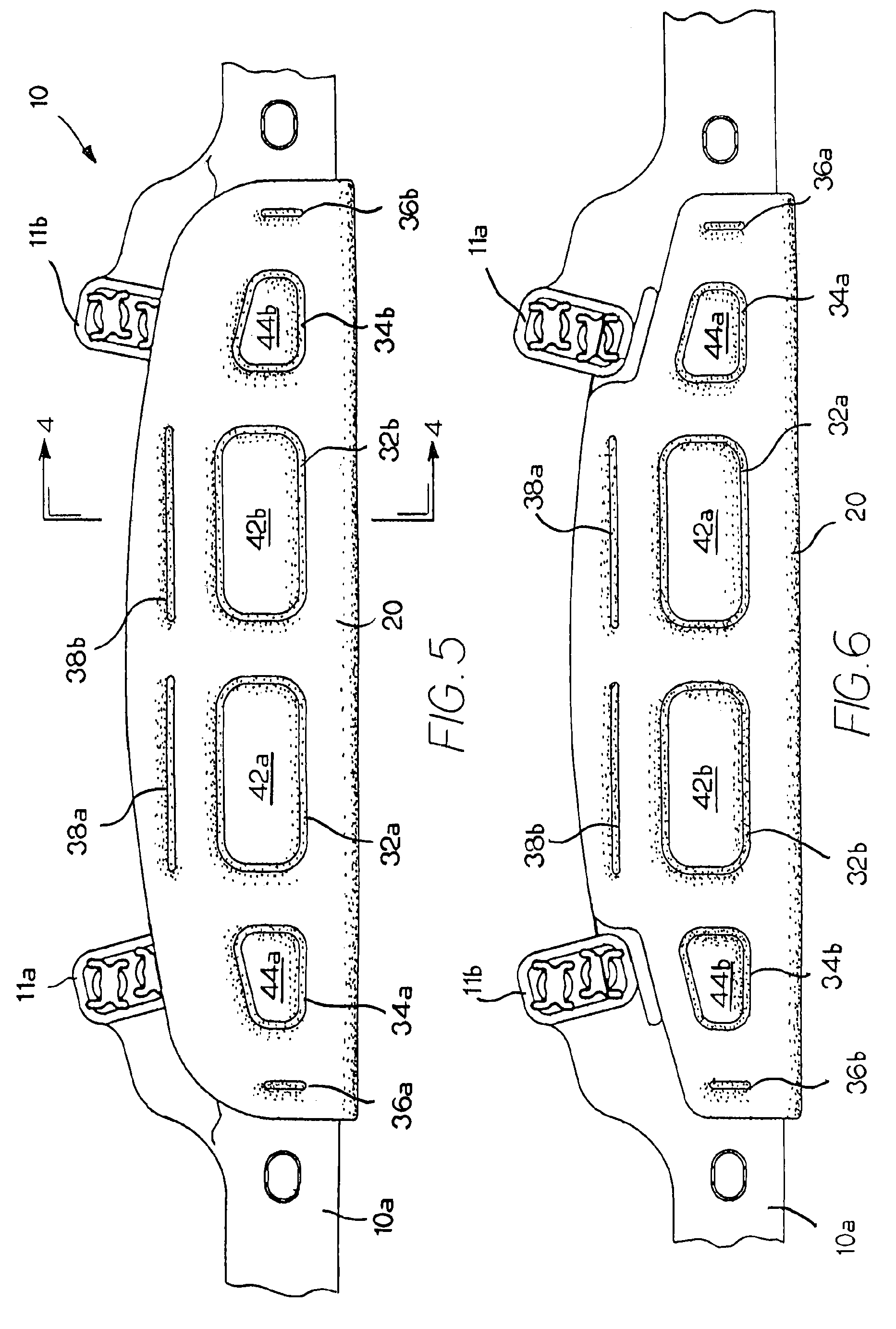Brow pad for the headband of protective headgear
a technology for protective headgear and brow pads, which is applied in the direction of protective garments, helmet covers, hats, etc., can solve the problems of removing such brow pads from the headband, causing damage to the headband itself, and becoming disengaged from the headband
- Summary
- Abstract
- Description
- Claims
- Application Information
AI Technical Summary
Benefits of technology
Problems solved by technology
Method used
Image
Examples
Embodiment Construction
[0023]The present invention is a brow pad for the headband of a protective helmet or similar headgear, a brow pad that is ultrasonically welded or similarly joined to itself through openings defined through the headband.
[0024]FIG. 1 is a plan view of an exemplary headband 10, specifically illustrating the front portion 10a of the headband 10 that would be positioned adjacent the forehead of a wearer when the headband 10 is incorporated into an article of protective headgear, such as a hard hat, helmet, respirator hood, or faceshield. This exemplary headband 10 is designed for use with a hard hat. In this regard, the headband 10 includes a plurality of upwardly extending appendages 11a, 11b (two of which are illustrated in FIG. 1), with each such appendage 11a, 11b being used to secure the headband 10 to the suspension of the hard hat. For further details regarding the incorporation of such a headband 10 into a protective helmet, reference is made to U.S. Pat. No. 6,609,254, which is...
PUM
 Login to View More
Login to View More Abstract
Description
Claims
Application Information
 Login to View More
Login to View More - R&D
- Intellectual Property
- Life Sciences
- Materials
- Tech Scout
- Unparalleled Data Quality
- Higher Quality Content
- 60% Fewer Hallucinations
Browse by: Latest US Patents, China's latest patents, Technical Efficacy Thesaurus, Application Domain, Technology Topic, Popular Technical Reports.
© 2025 PatSnap. All rights reserved.Legal|Privacy policy|Modern Slavery Act Transparency Statement|Sitemap|About US| Contact US: help@patsnap.com



